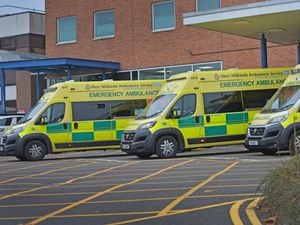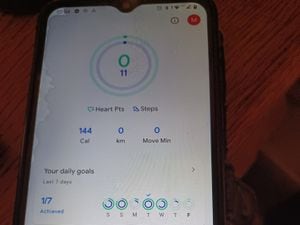'Takeaway pizza delivery quicker than an emergency ambulance' - 999 chief
An West Midlands ambulance boss has apologised to patients who have endured “unacceptable” waiting times – saying that people would get a takeaway pizza delivered quicker than an emergency ambulance.

Mark Docherty revealed that some life-threatening emergencies with a seven-minute target are taking up to 30 minutes to respond to.
Some residents in Staffordshire have waited more than 16 hours for an ambulance to take them to hospital, performance figures have revealed, with targets in most areas being missed for even the most urgent cases.
Mr Docherty, West Midlands Ambulance Service’s executive director of nursing and clinical commissioning, who is due to step down from his post next year, gave a stark picture of the challenges faced in the Staffordshire Moorlands to district councillors on Wednesday.
He said: “I think honesty is the only way to get us through what I think is going to be the most difficult winter any of us have ever experienced.
“For a category 1 response, patients would probably be unconscious, probably be not breathing, they may be in cardiac arrest or they may be actively fitting or very young babies. They’re very time critical and there are some really long waiting times.
“In ST13 (Leek and surrounding areas) you would wait on average 14 minutes for a Category 1 ambulance response. You should get one in seven minutes; 14 minutes is far, far too long.
“If you’re in cardiac arrest and you haven’t got anyone helping you, you will almost certainly die in those 14 minutes. We’re not going to help you getting to you in cardiac arrest 14 minutes after the call.
“For 10 per cent of patients, some of the numbers were approaching 30 minutes (in other parts of Staffordshire), so if you’re unconscious, you’re not breathing, you’ve got some postcode areas where patients are waiting over 30 minutes. You will get a takeaway pizza delivered quicker than you will get an emergency ambulance.”
For category 2 time-critical medical emergencies, such as heart attacks or strokes, some people were waiting around 111 minutes – almost two hours – in the ST11 postcode area, which includes Blythe Bridge, Cresswell and Caverswall, councillors heard. And for 10 per cent of patients the wait could even be more than five hours.
Mr Docherty said: “We should be getting to you within 18 minutes (for category 2 calls). They’re the patients that if we can get to them quick – and we can get them to hospital quick – they can get really good treatment.
“If you’ve had a heart attack or a stroke there’s lots of treatments that can help you to return to near normal functioning. If we’re delayed by four hours that window has closed and there’s very little the hospital can do to help.
“Category 3 would typically be frail elderly people who maybe have fallen outside. Some of the responses you’re talking nearly 400 minutes (six hours and 40 minutes) mean average in some postcode areas and 300 (five hours) in many postcode areas.
“Can you imagine lying for five hours in this weather? Even in an inside building, on a reasonably hard surface most of us would become unwell simply as a result of lying on a hard surface.
“If you go to the 10 per cent of patients, some are waiting as long as a thousand minutes (in the ST12 and ST7 postcode areas).
He added: "It’s shocking, that we’re in this century, one of the richest nations on earth, and we’ve got people waiting so long.
“Every single category of patient that we’re dealing with in this part of the country is waiting far, far too long for an emergency response. And I’m not going to sit here and pretend that the service is anything other than unacceptable.
“If we’re taking 15 hours to get to people on Category 3 you might argue that service has already failed. For the many patients we’ve let down and patients no longer here, I’m dreadfully sorry.”
Staffordshire has also seen the largest drop in “ambulance productivity” – the number of incidents managed per ambulance crew per 12-hour shift – in the past five years, Mr Docherty said. In January 2018 an ambulance crew in Staffordshire would be dealing with around seven incidents during a 12-hour shift – the highest number in the region – but in September 2022 this figure had plummeted to just 3.1, which was the second lowest level.
“We were doing alright in January 2018, which was pre-Covid”, Mr Docherty told councillors.
“Either we need to more than double the number of ambulances we’ve got on the road just to deal with the same number of people, or we need to do something massively different.
“We’ve been lucky in Staffordshire that we’ve got a service called CRIS – the Community Rapid Intervention Service -so we’ve been able to give some of our work to them to do. That’s partially offset some of our loss of productivity.
“But by and large the biggest impact on the loss of productivity is response times. We’ve lost all the spare ambulances we ever had – every single ambulance is in use all of the time.
“Most of our ambulances spend most of their time stuck outside a hospital and that’s where the resource has gone. It’s lost to us, it’s lost to people who need it and therefore the response times suffer and they get worse and worse.”





